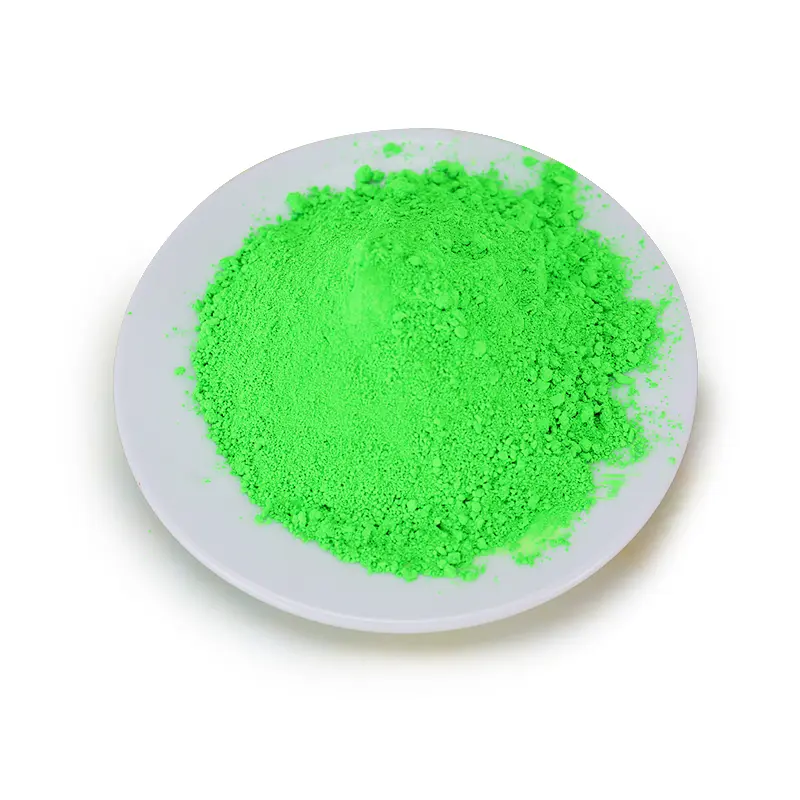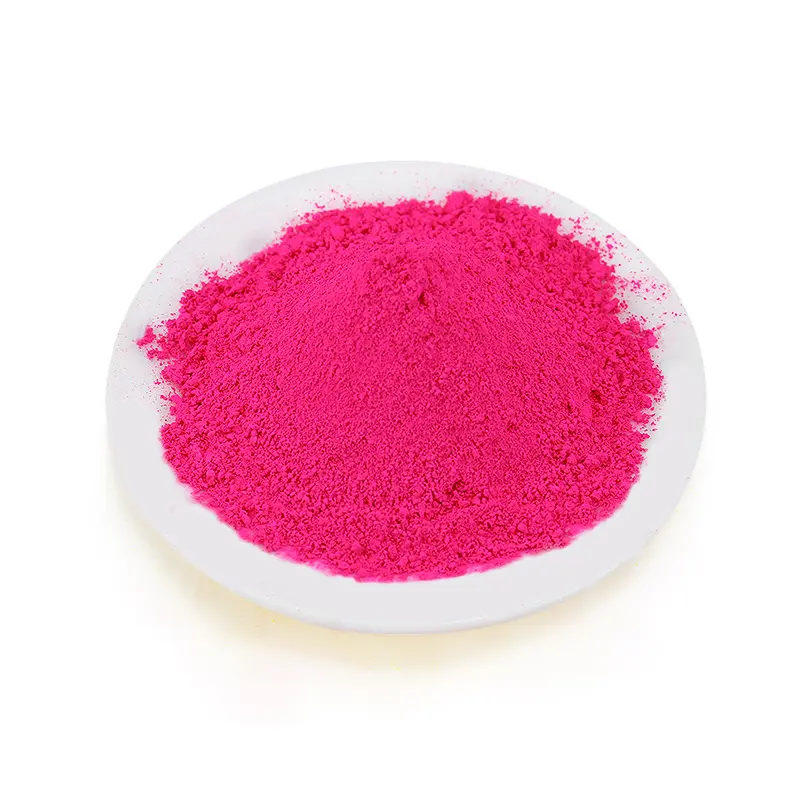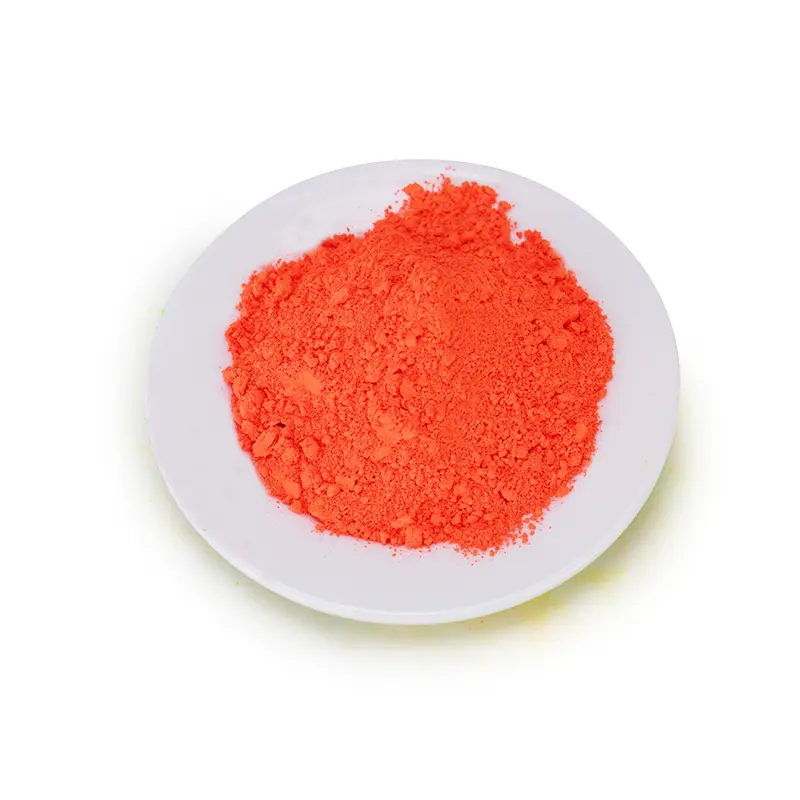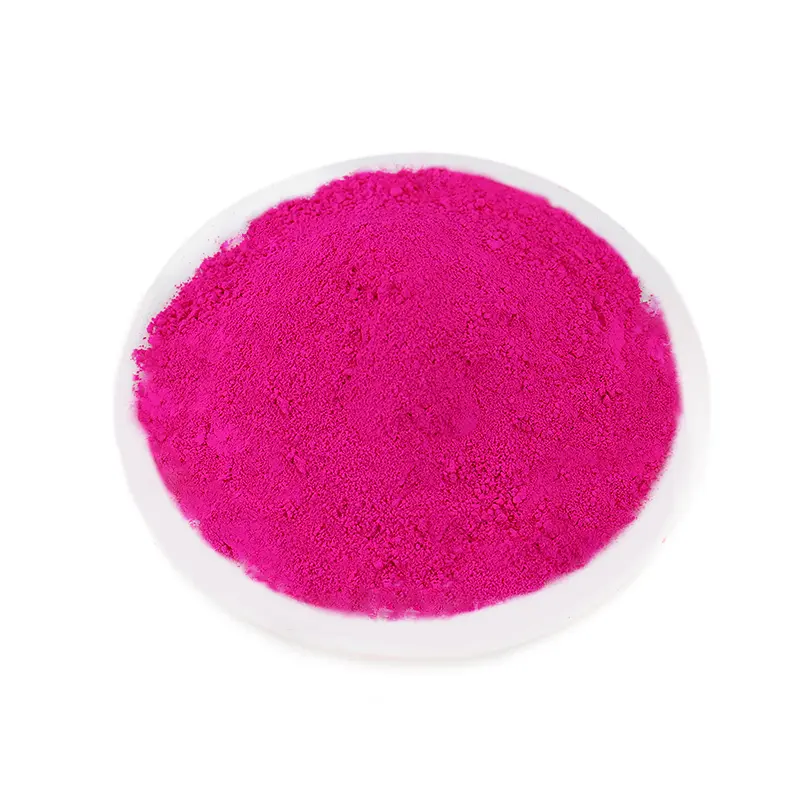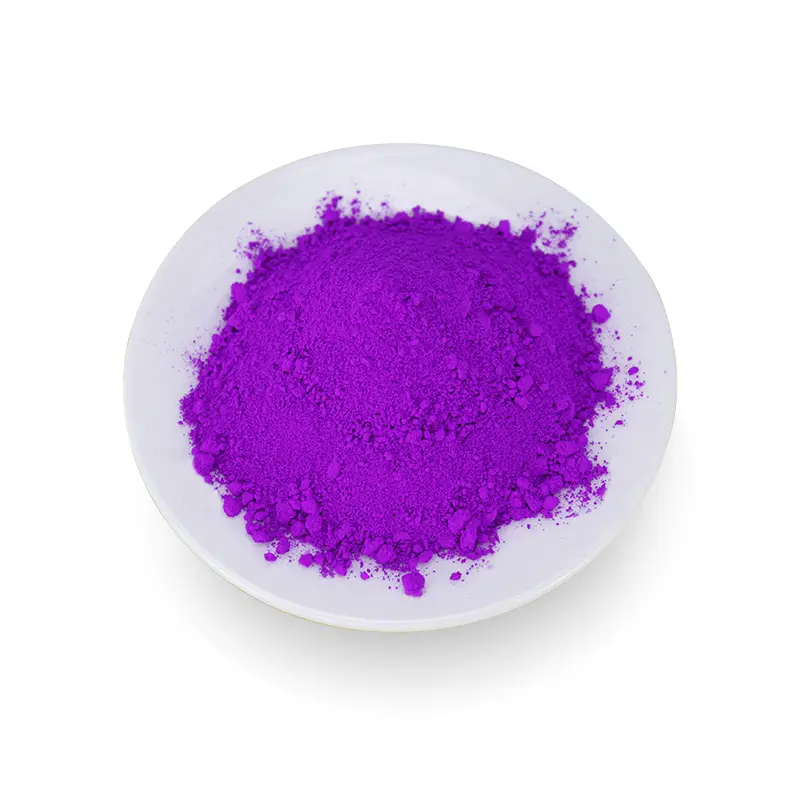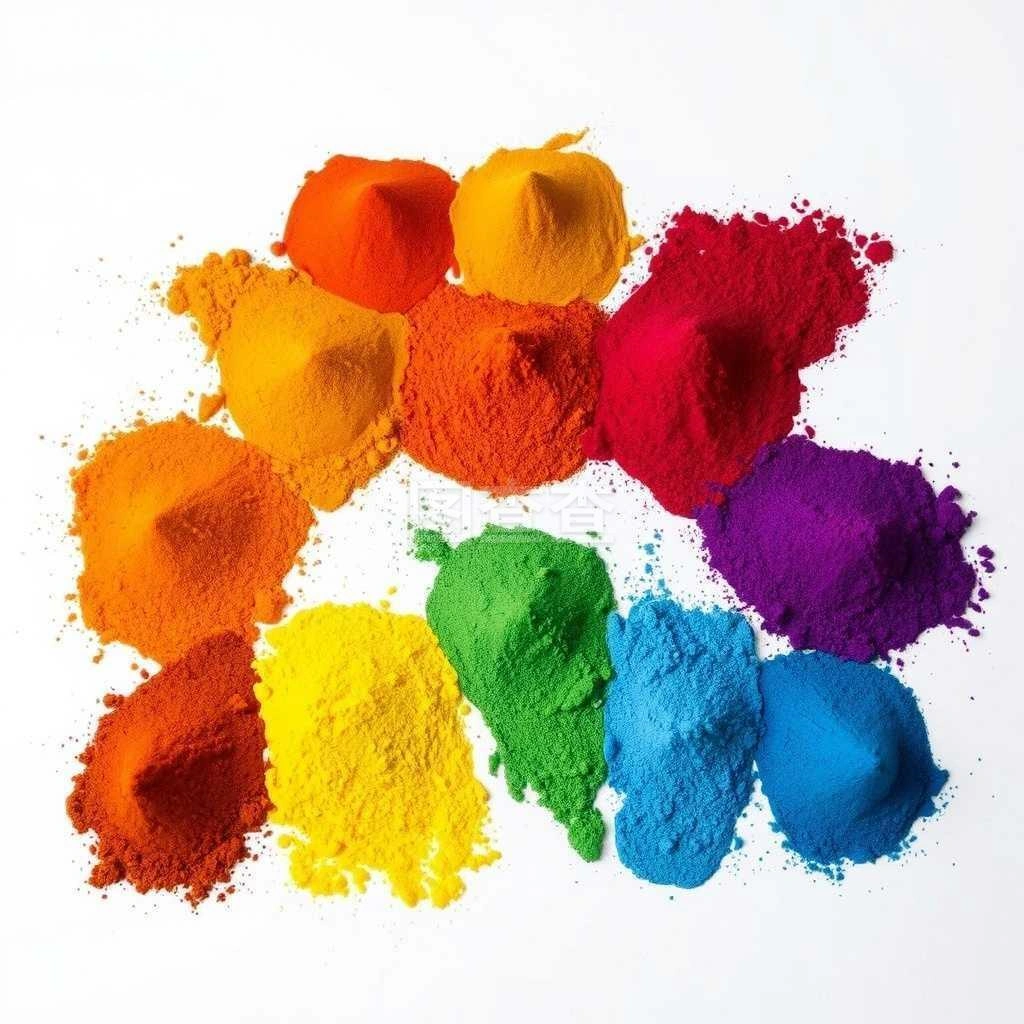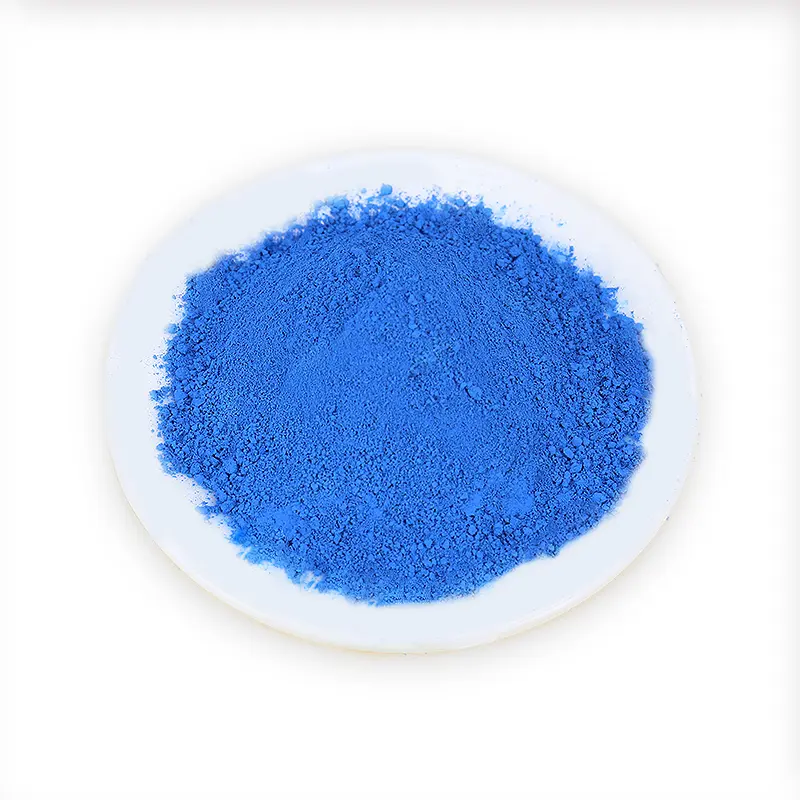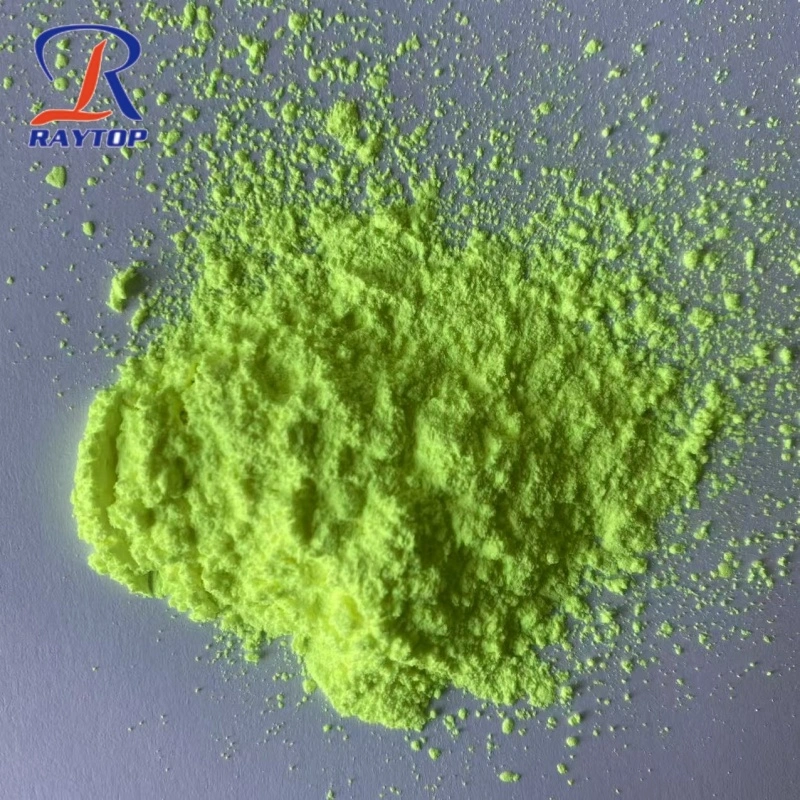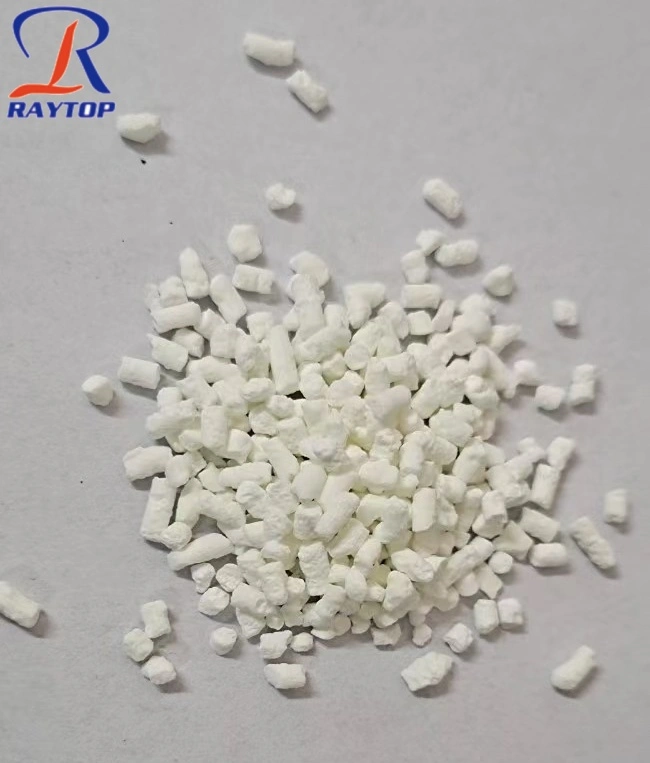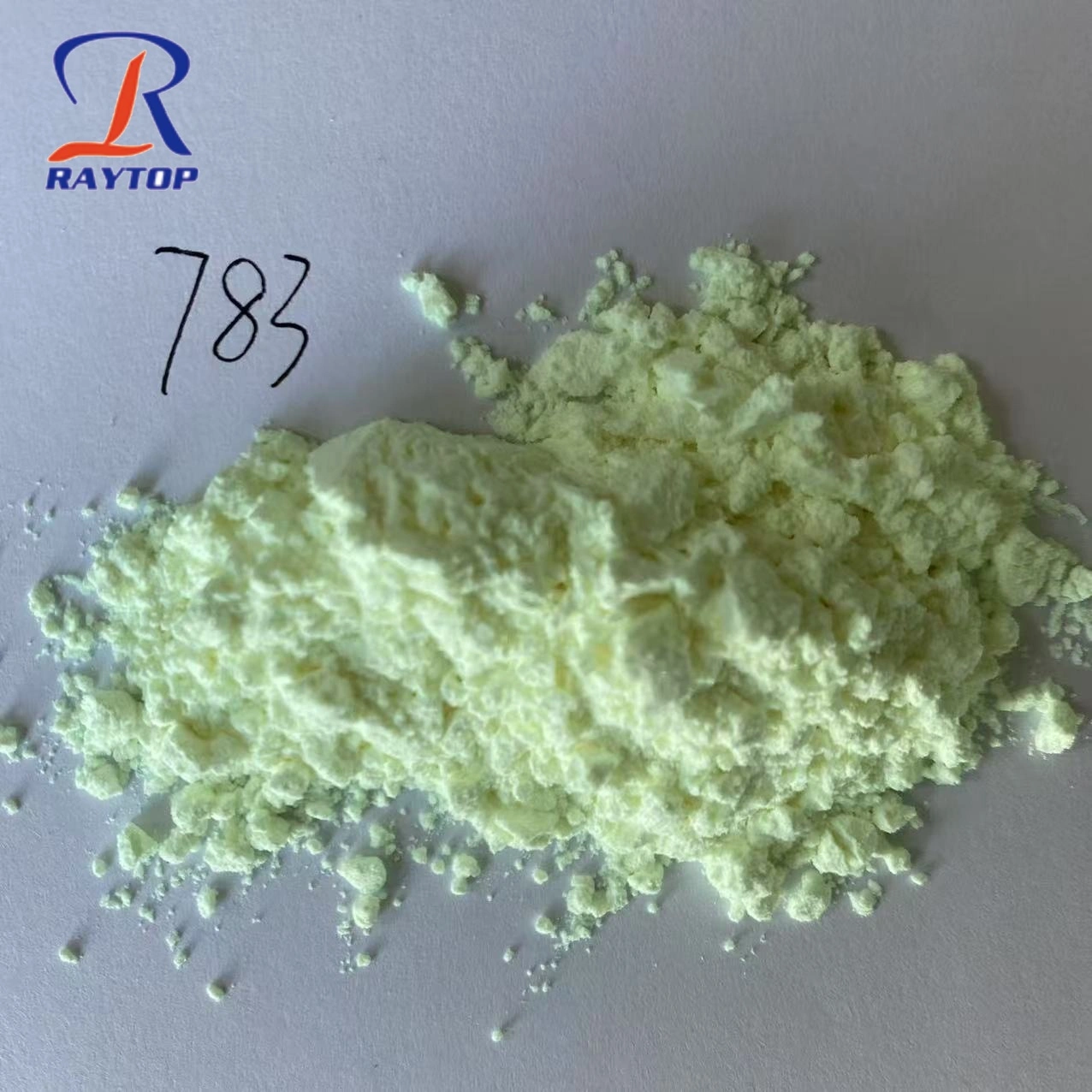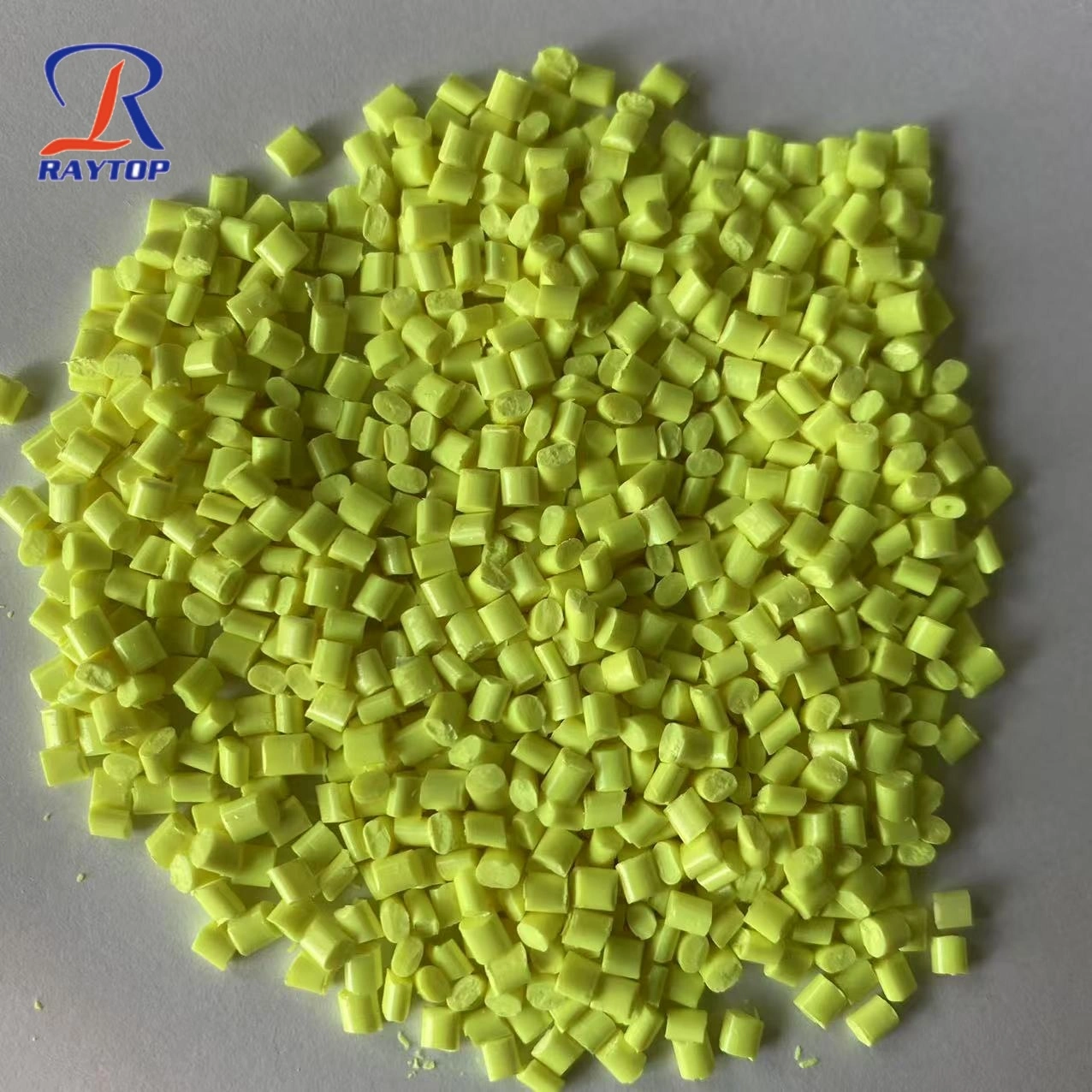Daylight fluorescent pigment, also known simply as fluorescent pigment, is a type of pigment that exhibits luminescence under daylight or artificial light. Unlike conventional pigments, which simply reflect light, fluorescent pigments absorb light at one wavelength and emit it at another, usually longer, wavelength. This phenomenon is called fluorescence.
These pigments are often used in various applications, including paints, coatings, inks, plastics, textiles, and cosmetics. They are valued for their ability to create vibrant, eye-catching colors that appear to glow under certain lighting conditions. Fluorescent pigments are especially popular in applications where visibility and attention-grabbing properties are desired, such as safety signs, high-visibility clothing, and artistic projects.
Daylight fluorescent pigments come in a variety of colors and formulations, allowing for a wide range of applications and creative possibilities. They are typically made from fluorescent dyes or organic compounds that are dispersed in a transparent carrier material. The choice of carrier material can affect the pigment's compatibility with different mediums and its performance characteristics, such as durability and lightfastness.
Daylight Fluorescent Pigment Specifications Table
| Property | Description |
|---|---|
| Color Range | Green, Lemon Yellow, Red, Orange, Pink, Blue, etc. |
| Appearance | Fine Powder |
| Particle Size | 1-5 µm |
| Specific Gravity | 1.2 - 1.5 g/cm³ |
| Bulk Density | 0.3 - 0.6 g/cm³ |
| Melting Point | 80 - 130°C |
| Heat Resistance | Up to 200°C (depends on the color) |
| Light Fastness | 4 - 6 (1=poor, 8=excellent) |
| Solubility | Insoluble in water, soluble in organic solvents |
| Chemical Resistance | Acid and alkali resistant |
| Moisture Content | ≤ 0.5% |
| pH Value | 6.0 - 8.0 |
| Viscosity | 15-30 cP |
| Compatibility | Compatible with various resins and polymer systems |
| Application Methods | Screen Printing, Injection Molding, Extrusion, etc. |
| Recommended Usage | 0.1% - 3.0% (depending on the application and color strength required) |
| Packaging Options | 25 kg/drum, Custom packaging available |
| Shelf Life | 12 months when stored in a cool, dry place |
We have several series of products namely fluorescent pigments TP,IP, FVQ,UP and EP with more than 60 colors available.The products are widely used in plastic materials,inks,paints, coatings,candles and others.
Daylight Fluorescent Pigment Applications :
Series | TP Series | IP Series | FVQ Series | EP Series |
Inks/Paints | ● | ● | O |
一 |
Coating | ● | ● | O |
一 |
PVC | ● | ● | O |
一 |
PP/PE/EVA/ Rubbe | ● |
一 |
O |
一 |
Textile printing |
一 |
一 | ● |
● Highly Recommended O Recommended -Not Tested
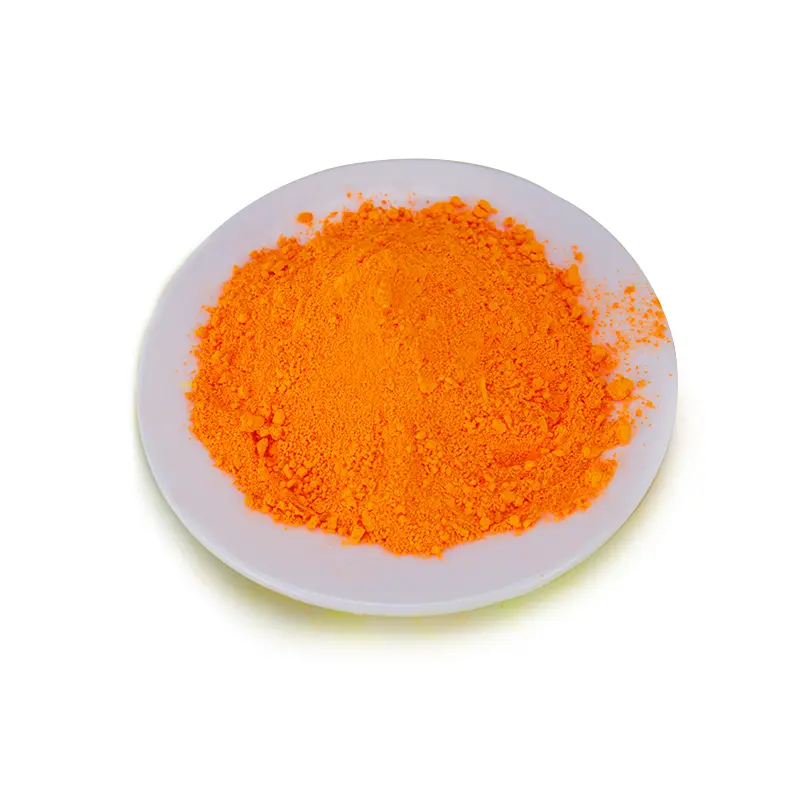
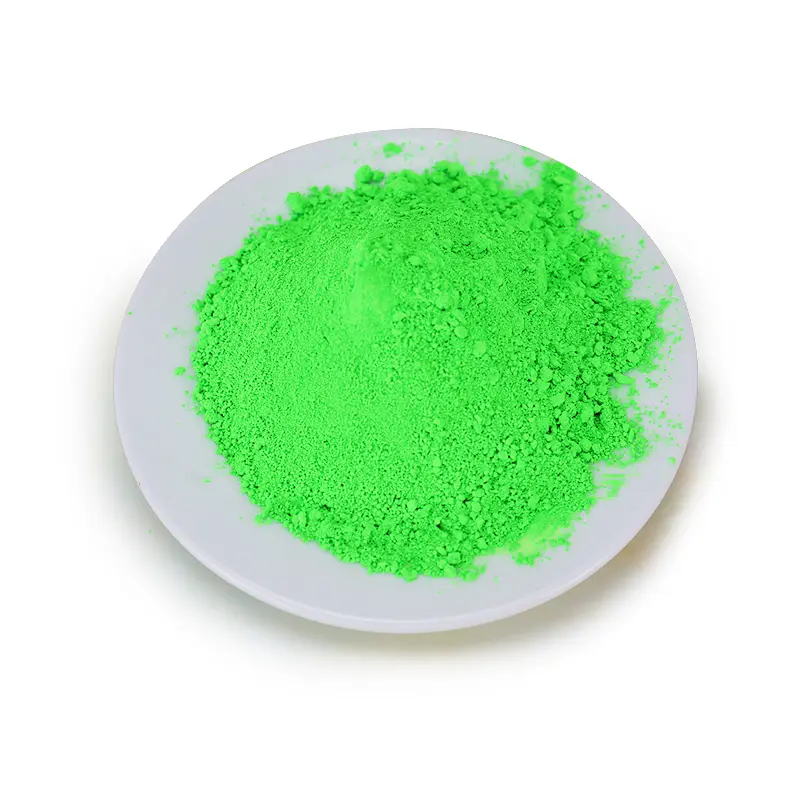
Daylight Fluorescent Pigments—TP Series
Product Features :
The TP series fluorescent pigment adopts microsphere technology which ensures easy dispersion.Solid solu- tion of dyestuffs in a thermoset resin with very fine and uniform particle size.It can replace the shoe-material fluorescent pigments imported from Korea,Britain and other countries.
Bright Color;Good Thermal stability.
Great Vulcanization Resistance and Migration Resistance.
Excellent Color Strength and Low-formaldehyde.
Temperature Resistance up to 260℃ .
Applications :
The TP series are widely used in plastic products,especially in rubber,EVA shoe materials and injection plastics.
Available Colors:
TP-10 Lemon Yellow |
TP-11 Pink |
TP-12 Rose |
TP-12H Rose |
TP-13 Red |
TP-14 Orange Red |
TP-15 Orange |
TP-16 Orange Yellow |
TP-16Y Orange Yellow |
TP-17 Yellow |
TP-18 Green |
TP-19 Blue |
TP-20 Violet |
TP-21 Magenta |
TP-21Y Magenta Daylight Fluorescent Pigments—IP SeriesProduct Features:The IP series fluorescent pigment adopts microsphere technology. Solid solution of dyestuffs in a thermoset resin,having good dispersity and solvent resistance. Applications : The IP series can be well dispersed in water-based and solvent systems,and can be widely used in leather color- ing,paints,inks,coatings,etc. Available Colors: IP-11 Pink IP-12 Rose IP-13 Red IP-14 Orange Red IP-15 Orange IP-16 Orange Yellow JP-17 Yellow IP-17H Yellow IP-18 Green IP-19 Blue IP-20 Violet IP-21 Magente IP-21Y Magenta Package: 10kgs/paper bag,20kgs/carton(10kgs*2), |
Daylight Fluorescent Pigments—FVQ Series
Product Features:
The FVQ series fluorescent pigment adopts microsphere technology.
Solid solution of dyestuffs in a thermosetting resin,with excellent brightness,color strength,intense fluorescemce and anti-adhesion performance.
Applications :
Applications for use are very wide,mainly in plastics coloring like PP/PE,also in painting ink,water-based print ing color paste and many other fields.
Available Colors :
FVQ-10 Lemon Yellow FVQ-16 Orange Yellow
FVQ-11 Pink FVQ-17 Yellow
FVQ-12 Rose FVQ-18 Green
FVQ-13 Red FVQ-19 Blue
FVQ-14 Orange Red FVQ-20 Violet
FVQ-15 Orange FVQ-21 Magenta
Package:
25kgs/paper bag
Daylight Fluorescent Pigments—EP Series
Product Features:
EP series is a new type offluorescent pigment dispersion in water of microparticles with excellent color strength and dispersity.EP sries is formaldehyde free and composed by acrylic resin.Its particle size shows superfine and uniform distribution.Applications 主
Widely used in various water-based systems.
Water-based flexo and Gravure ink,Paper coating,Textile printing,Water-based highlighter,Garment dyeing.
Available Colors :
EP-11 Pink
EP-12 Rose
EP-13 Red
EP-14 Orange Red
EP-14Y Orange Red Y
EP-15 Orange
EP-16 Orange Yellow
EP-17 Yellow
EP-18 Green
EP-19 Blue
EP-20 Violet
EP-20B Violet B
EP-21 Magenta
EP-21Y Magenta Y
Package :
30kgs per plastic drum.
Fluorescent powder is a special pigment with the following main applications:
Fluorescent Pigments: Fluorescent powder is commonly used in the production of fluorescent pigments, which are used to manufacture products such as highlighter pens, fluorescent inks, fluorescent paints, and fluorescent coatings. These products emit bright colors in dimly lit environments, enhancing visibility and alertness.
Fluorescent Signage: Fluorescent powder can be used to produce fluorescent signage and symbols, such as safety signs, emergency exit signs, and traffic signs. Fluorescent signage is more noticeable in dark or low-light environments, improving warning effectiveness and safety.
Fluorescent Agents: Fluorescent powder can be used as fluorescent agents to enhance the fluorescent effect of materials. Fluorescent agents are commonly used in fibers, plastics, coatings, and other materials to produce fluorescence under ultraviolet light, applied in anti-counterfeiting, detection, tracking, and other fields.
Decoration and Beautification: Fluorescent powder is also used for decorating and beautifying products, such as toys, handicrafts, and stationery. Adding fluorescent powder can make the products more eye-catching and appealing.
In summary, fluorescent powder has a wide range of applications, mainly used to enhance visibility, warning effectiveness, and decorative effects. It is a special pigment that plays an important role in various industries and fields.
Daylight fluorescent pigments usage ratio guide
Daylight fluorescent pigments are specialized colorants known for their vibrant and bright hues, which make them highly desirable in various applications, including paints, coatings, and plastics. These pigments have unique optical properties that can enhance visibility and aesthetic appeal. To ensure optimal performance and cost-effectiveness, the usage ratios and principles for incorporating these pigments into different mediums must be carefully considered.
1. Usage Ratios in Paints and Coatings
In paints and coatings, daylight fluorescent pigments are typically used in lower concentrations compared to conventional pigments due to their high color strength and unique light emission properties. The recommended usage ratios vary depending on the desired brightness and opacity:
Acrylic Paints: 1% to 5% by weight of the total paint formula. Lower concentrations are sufficient for achieving bright colors, while higher concentrations may be used for enhanced brightness.
Water-based Paints: 2% to 6% by weight. Due to the water solubility of some fluorescent pigments, it is essential to use compatible pigments to prevent issues like pigment bleeding or fading.
Solvent-based Paints: 1% to 4% by weight. Compatibility with solvents must be verified to avoid potential stability issues.
Principle: The key principle in using fluorescent pigments in paints and coatings is to balance the brightness and opacity. Using excessive amounts can lead to a loss of transparency and a chalky appearance. It is recommended to perform compatibility tests to ensure that the pigment does not react with the binder or solvent in the paint system.
2. Usage Ratios in Plastics
Daylight fluorescent pigments are used in various plastic applications, including polyethylene (PE), polypropylene (PP), and polyvinyl chloride (PVC). The recommended usage ratios for plastics are typically higher than those for paints due to the need for thorough dispersion and color intensity:
Polyethylene (PE) and Polypropylene (PP): 0.5% to 3% by weight. Lower concentrations are used for translucent or semi-opaque applications, while higher concentrations are necessary for opaque or solid-colored items.
Polyvinyl Chloride (PVC): 0.3% to 2% by weight. The lower usage ratio helps maintain the mechanical properties of PVC while still achieving vibrant colors.
Acrylonitrile Butadiene Styrene (ABS): 0.5% to 2.5% by weight. ABS requires a lower concentration due to its excellent pigment dispersion properties.
Principle: In plastic applications, achieving uniform dispersion is crucial to prevent color streaks and maintain the mechanical properties of the polymer. The pigment must be compatible with the polymer matrix and should be pre-dispersed in a carrier resin to facilitate even distribution during processing.
3. General Usage Principles
Compatibility: Always ensure that the daylight fluorescent pigment is compatible with the medium (paint, coating, or plastic). Incompatibility can lead to issues such as pigment migration, fading, or poor dispersion.
Light Stability: Fluorescent pigments are generally less stable under prolonged UV exposure compared to conventional pigments. Therefore, they are best suited for indoor applications or outdoor use with UV inhibitors.
Processing Temperature: For plastics, fluorescent pigments should be stable at the processing temperatures of the polymer. Overheating can cause degradation, leading to color fading or changes in hue.
Mixing and Dispersion: Proper mixing and dispersion are essential for achieving uniform color and performance. Using masterbatches or pre-dispersed pigment concentrates can help in achieving consistent results.
4. Adjusting Usage Ratios
The specific usage ratios may be adjusted based on:
Desired Color Strength: Higher pigment concentrations yield more vibrant and intense colors but may affect other properties such as transparency or gloss.
Opacity Requirements: To achieve a higher opacity, more pigment may be needed, but it should be balanced to avoid compromising other attributes of the material.
Cost Considerations: Fluorescent pigments are generally more expensive than conventional pigments, so optimizing their use without compromising on quality is critical.
In conclusion, the successful use of daylight fluorescent pigments in paints, coatings, and plastics requires careful consideration of usage ratios, compatibility, and processing conditions. By adhering to these principles, manufacturers can achieve the desired visual effects while maintaining the integrity and performance of their products.
